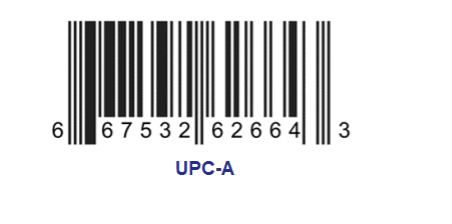
An Amazon Stock-Keeping-Unit (or Amazon SKU for short) is a term used to describe the barcodes that allow for better inventory management both on the manufacturer and the distributor’s side (like Amazon).
In other words, Amazon SKU is a unique string of letters and numbers assigned to each product in a seller’s inventory to help identify unique items for sale and keep track of stock. Amazon SKU number is only visible in your Seller Central account.
Having an SKU on Amazon helps sellers in many different ways, including categorizing products easily and tracking inventory levels.
SKUs are not optional. All products sold on Amazon are required to have an Amazon SKU number.
According to Amazon’s guidelines, Amazon SKU must not have more than 40 characters. Also, Amazon SKUs should contain information that helps you categorize information, manage inventory, and streamline communication between you, vendors, and customers.

You can use a combination of numbers and letters in your SKU on Amazon to convey details such as manufacturer, country of origin, size, condition, price, color, and other variations.
Sometimes you may need to change SKU on Amazon for various reasons. The only way to shift a SKU on Amazon is to create a new one for the same ASIN and transfer inventory to the new Amazon SKU.
There are two ways you can do this. You can sell old items and send new ones with the unique Amazon SKU number or contact Seller support and ask them to replace the existing SKUs with new ones.
The Difference Between Amazon SKU and UPC
These two terms are often confusing to some sellers, more so newbies. As we’ve already pointed out, Amazon SKUs are special codes assigned to each product in a seller’s inventory for purposes of tracking and inventory management.
UPCs (Universal Product Codes) are numeric barcodes assigned to products by the manufacturers who make those products. UPCs are used to identify products uniquely. UPCs are set by GS1.
Sellers need UPCs to list their items on Amazon. These codes help to identify each product on the site and the store they come from.
Below is an example of a UPC.

If you’re having problems keeping up with SKU management, it’s advisable to seek the help of a trusted Amazon marketing Agency like Emplicit.
In the next section, we look at why Amazon SKUs are so valuable, how you can efficiently track Amazon SKUs, and the metrics you can monitor with product SKUs.
Why SKUs Make It Easier To Track Sales On Amazon
For each product (or product variant) you launch, you need to have an SKU for it, which matches your end and Amazon’s end. But why are these codes so valuable?
Amazon uses SKUs for internal tracking and inventory management purposes. By using a dependable SKU system, Amazon efficiently monitors warehouse transfers to avoid confusion.
Amazon SKUs also make it easier for Amazon fulfillment centers to pick, pack, and ship products. When paired UPCs, SKUs enable Amazon to manage inventory sold across all their channels.
By helping Amazon track sales, Amazon SKUs come in handy in the allocation of Best Sellers Rank.
Amazon SKUs allow you to track sales trends, stock levels of products, warehouse transfers, profitability, and consumer spending habits.
Keeping track of SKUs can be a time-consuming and overwhelming task, especially for new sellers and those without an effective SKU management system. The best way to keep track of SKUs is to work with a professional agency specializing in SKU management.
You can create your own Amazon SKU or have Amazon generate for you. But it’s advisable to take your time to create your SKUs because letting Amazon generate SKUs for you may come with some disadvantages.
Amazon’s SKU generation system could be pretty random, which means you’re more likely to end up with meaningless SKUs that will be hard to recall. Generally, having Amazon generate SKUs for you can make keeping track of inventory a nightmare in many ways.
But creating your SKUs allows you to create a comprehensive product identification system, making tracking of inventory more manageable.

So how do you create an effective SKU?
Here Are The Steps To Follow
Step 1: Have the first two letters represent your supplier or manufacturer. For example, if your manufacturer is Cisco Systems, then your first two letters should be CS.
Step 2: The following two letters should represent your product type. If you’re selling video games from Cisco Systems, you can consider making the subsequent two letters: VG.
Step 3: Enter the date, preferably when you sent your products to Amazon’s warehouse. If the date is 04/03/2021, enter 04032021.
Step 4: You can add the condition of your product. If it’s new, you can enter NP, and if t’s used, you can enter UP:
Step 5: Enter your purchase price. The naming convention could be something like 50D if $50 were the purchase price.
Step 6: The other digits can be anything you want them to be. In our example, we’ll use our product’s number in a batch, which is 10. Remember, you have up to 40 characters to use, but it’s advisable to keep your SKU a bit short.
From our example, our product’s SKU number is CS-VG-04032021-UP-50D-10.
How To Create a Product SKU for Use on Amazon
Amazon has an option for sellers to auto-generate SKUs based on their guidelines, but you can also follow your internal guidelines to create your own if you’re an FBM seller.
Managing Multiple SKUs & Product Variants
The more your product lineup grows, the more SKUs you’ll have to manage: create, store, track, archive, etc. How do you do this effectively while keeping track of sales on Amazon?
There are best practices you should follow to create an effective SKU system.
- Best Practice #1: Generate SKUs rather than having Amazon do it for you
As we’ve mentioned already, generating your SKUs allows you to standardize SKUs for a specific group of products for easy identification. Doing so takes the tediousness out of the whole process of product identification and makes your product catalog easily expandable.
- Best Practice #2: Use SKU generator
There are many online SKU generators you can utilize to generate your SKUs automatically. Some of the best SKU generators you can use include Sellery, Zoho Inventory, TradeGecko, and Gorgias.
These tools read the attributes for all your products to generate SKUs automatically for your entire catalog.

- Best Practice #3: Use each SKU for only one product or product type
Do not use the same Amazon SKU number for more than one product or product type, as this can bring confusion, especially when your product lineup grows.
- Best Practice #4: Ensure your SKU format is consistent
Once you’ve created a standard format for your Amazon SKUs, be sure to stick to the naming structure to keep your SKUs consistent.
Some of the pitfalls you’ll want to avoid when creating Amazon SKUs include:
- Do not start your Amazon SKU number with zero because come software may disregard the zero, and this can cause massive inconvenience.
- Avoid using symbols such as &, $, @, /,?, ! in your SKU numbers as they may result in errors in a spreadsheet and make it harder for employees to recall.
- Avoid characters that look like both numbers and letters, such as letters “I,” “L,” and “O.” These letters make SKU codes harder to decode.
- Do not use product title in your SKU
Aside from leveraging the best inventory management software to set your SKUs, working with an Amazon management agency like Sunken Stone can make the process more efficient.
5 Examples of Amazon SKUs & How They Work
Whereas Amazon SKUs are similar, merchant-created SKUs are different based on the internal guidelines. What these guidelines look like depends on what you’re selling.
The following are examples of Amazon SKUs and how they work.
Amazon SKU Example #1: SKUs Based On Product’s Title
For example, if your product is called Cisco Catalyst 3560-CX Series Switch, you’ll take the first letter of every part of the title and generate your Amazon SKU number. In this case, the SKU will be CC3SS.
Amazon SKU Example #2: SKU Based On A Product’s Attributes
For example, if your product is called Catalyst PON 4-Port PoE Voice-Activated, the Amazon SKU number will be converted into P-4P-P-VA.
Amazon SKU Example #3: SKU Arranged Based On The Importance Of Variables
For example, a product titled “Premium All-Natural Boar Bristle Beard Brush-Real Wooden Handle” will have an SKU like PR-AN-BB-BB-RWH.
This SKU identifies the key attributes of the product and arranges them in the order of their importance. The essential elements come at the beginning of the SKU section. The others come towards the end of the SKU section.
Amazon SKU Example #4: SKUs Automatically Converted Into The Upper Case From The Lower Case.
For example, an SKU like tr-nl-23092021-jp is converted to the SKU: TR-NL-23092021-JP.
Amazon SKU Example #5: Virtual SKUs
These SKUs represent products that do not need to be physically fulfilled, such as software subscriptions. These SKUs do not require inventory.
Proper SKU Management Means Higher Amazon Profits
Squeezing as much profit out of Amazon means rolling with an efficient, effective SKU management system that doesn’t introduce too many pitfalls.

Photo by Depositphotos
Many sellers find it difficult to manage their entire SKU system, which considerably impacts their business performance.
For instance, many sellers do not follow the best practices for creating Amazon SKUs. Not implementing best practices often makes the whole process of SKU management tedious, time-consuming and frustrating.
If you’re among the many sellers who are struggling with SKU management, it’s best to work with a professional agency to help you streamline the whole process and save time.
SKUs are essential for both sellers and Amazon. Sellers can use them to keep track of crucial metrics such as sales trends while Amazon leverages SKUs to optimize inventory management in their warehouses.
At Emplicit, we have a team of skilled and experienced professionals who can help you with SKU generation, SKU management, and other related tasks. Contact us today and let us help you with SKU management.
Do You Feel Like Your Amazon Business Is In A Rut?
You’re not alone. Many businesses find it difficult to scale on Amazon. That’s where we come in. We are a top-tier, turnkey, performance-based Amazon marketing agency that can help you take your business to the next level.
We have a proven 4-pillar process that helps businesses achieve higher sales, AOVs, ROIs, and other 3-letter acronyms. Let us show you how we can help you achieve the same success. Click here to schedule a call with a strategist.

